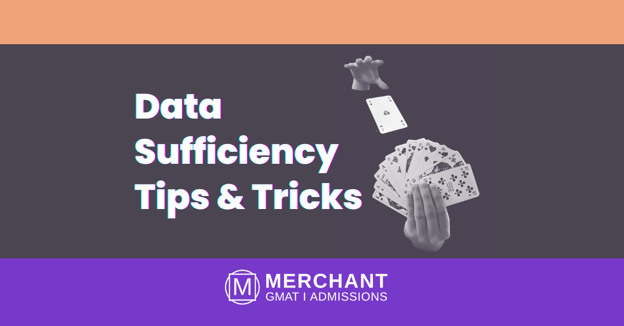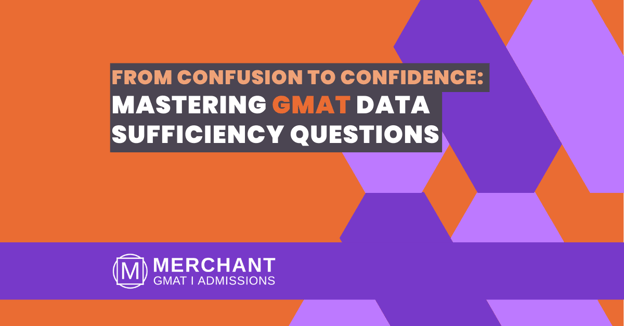Unpacking GMAT Data Sufficiency: How It Can Help You Test Your Critical Thinking

Have you ever struggled with a GMAT Data Sufficiency (DS) question and wondered what you could have done differently? If so, you're not alone. DS can be one of the most challenging question types on the GMAT, requiring careful critical thinking and analysis.
But don't despair – there is a way to approach these questions that can help boost your chances of getting the right answer. In this blog post, we'll unpack what data sufficiency is all about and how you can use this question type to test your own critical thinking skills. By the end, you'll have a better understanding of how to tackle DS questions on the GMAT – and how to use them to your advantage. Read on to learn more!
Define what data sufficiency is and how it differs from other types of questions on the GMAT
Data sufficiency is an important concept for those preparing for the Graduate Management Admission Test (GMAT). DS questions, which appear in the Quantitative section of the exam, require test-takers to determine whether the given information offers enough details to answer a question. They differ from other questions in that, instead of providing a definitive answer, they provide two pieces of information and ask whether one or both are necessary to solve a given problem. It’s important to remember that it is not necessary to actually solve these problems; rather, the test-taker must decide if the provided data is sufficient. Becoming adept at solving DS questions on the GMAT can be incredibly beneficial as they generally take less time and mental effort than solving other quantitative problems.
Outline the process of solving a data sufficiency question, step by step
Solving a DS question is not as hard as one might think. It simply requires careful reading, analysis, and the ability to recognize nuggets of information that the question gives away. First, read through the entire statement and make sure you have a thorough understanding of the problem. To start narrowing down your answer choices, read each statement separately and decide whether it can in itself be used to solve the problem - this forms the basis of statement 1. Then evaluate statement 2 on its own to see if it provides extra information or not - if it does, it's the basis of statement 2. Once you've identified both statements, select the answer choice which accurately represents how they work together to solve the problem. Being systematic in your approach will help immensely when solving DS questions, so don't be afraid to use process-of-elimination techniques such as marking off possibilities as you go along!
Discuss the benefits of practicing data sufficiency questions, including improved critical thinking skills
Practicing DS questions is a powerful way for students to improve their critical thinking skills. By exploring multiple angles of a problem and working to identify the least amount of information required to accurately solve the exercise, students can hone their problem-solving skills and sharpen their ability to reason through complex issues in daily life. DS practice also encourages learners to use scientific reasoning and apply logical principles to assess accuracy and discover insights into the topics they’re studying. Additionally, this form of practice helps build concentration, which is essential when grappling with complicated problems in any field. For these reasons, DS questions can be especially useful for anyone looking to strengthen their mental faculties.
Tips for approaching data sufficiency questions on test day
Test day is no time to be surprised by DS questions. Instead, it's important to keep in mind a few key tips for ensuring your success. When answering a DS question, first read the question carefully and decipher exactly what information is being requested. Once you understand this, determine the number of statements needed to solve the problem. It's also essential to consider all statement combinations when determining which pieces of the puzzle are truly necessary and focus on what each statement is saying, so as not to overlook any critical details. Finally, use a process of elimination when ruling out answer choices by comparing each statement and discarding the ones that don’t meet the criteria. Going into the testing room with these tactics can make taking DS questions feel less overwhelming and more manageable even under pressure.
Although the process of solving a DS question can be intimidating, it becomes more familiar and accessible once practiced adequately. It is important to remember that neither answer choice will provide the solution – instead, each choice narrows down the possibilities so that you can determine the answer. By practicing these types of questions ahead of time, you can develop skills and confidence for tackling difficult problems on testing day. Furthermore, by applying our tips for assessing DS questions and other GMAT topics during your preparation time, you will be well-equipped with the right strategies and content knowledge before entering the test center. If you feel like additional assistance could help your GMAT experience go more smoothly on test day, then don’t hesitate to reach out to us at Merchant GMAT & Admissions! We work with individuals across all levels of exam preparedness, and offer customized courses personalized to meet your individual academic needs. Get in touch today – we would love to start working on your GMAT prep journey together!
Ready to Start?
Fill out the form, and a member of the Merchant Sales Team will be in contact with you shortly to discuss your MBA journey





